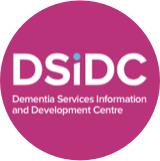Dementia is a broad category of brain diseases that cause a long-term and often gradual decrease in the ability to think and remember that is severe enough to affect daily functioning.[2] Other common symptoms include emotional problems, difficulties with language, and a decrease in motivation.[2][3] Consciousness is usually not affected.[11] A diagnosis of dementia requires a change from a person’s usual mental functioning and a greater decline than one would expect due to aging.[2][12] These diseases have a significant effect on caregivers.[2]
The most common type of dementia is Alzheimer’s disease, which makes up 50% to 70% of cases.[2][3] Other common types include vascular dementia (25%), dementia with Lewy bodies (15%), and frontotemporal dementia.[2][3] Less common causes include normal pressure hydrocephalus, Parkinson’s disease dementia, syphilis, HIV, and Creutzfeldt–Jakob disease.[13] More than one type of dementia may exist in the same person.[2] A small proportion of cases run in families.[14] In the DSM-5, dementia was reclassified as a neurocognitive disorder, with degrees of severity.[15] Diagnosis is usually based on history of the illness and cognitive testing with medical imaging and blood tests used to rule out other possible causes.[4] The mini mental state examination is one commonly used cognitive test.[3] Efforts to prevent dementia include trying to decrease risk factors such as high blood pressure, smoking, diabetes, and obesity.[2] Screening the general population for the disorder is not recommended.[16]

